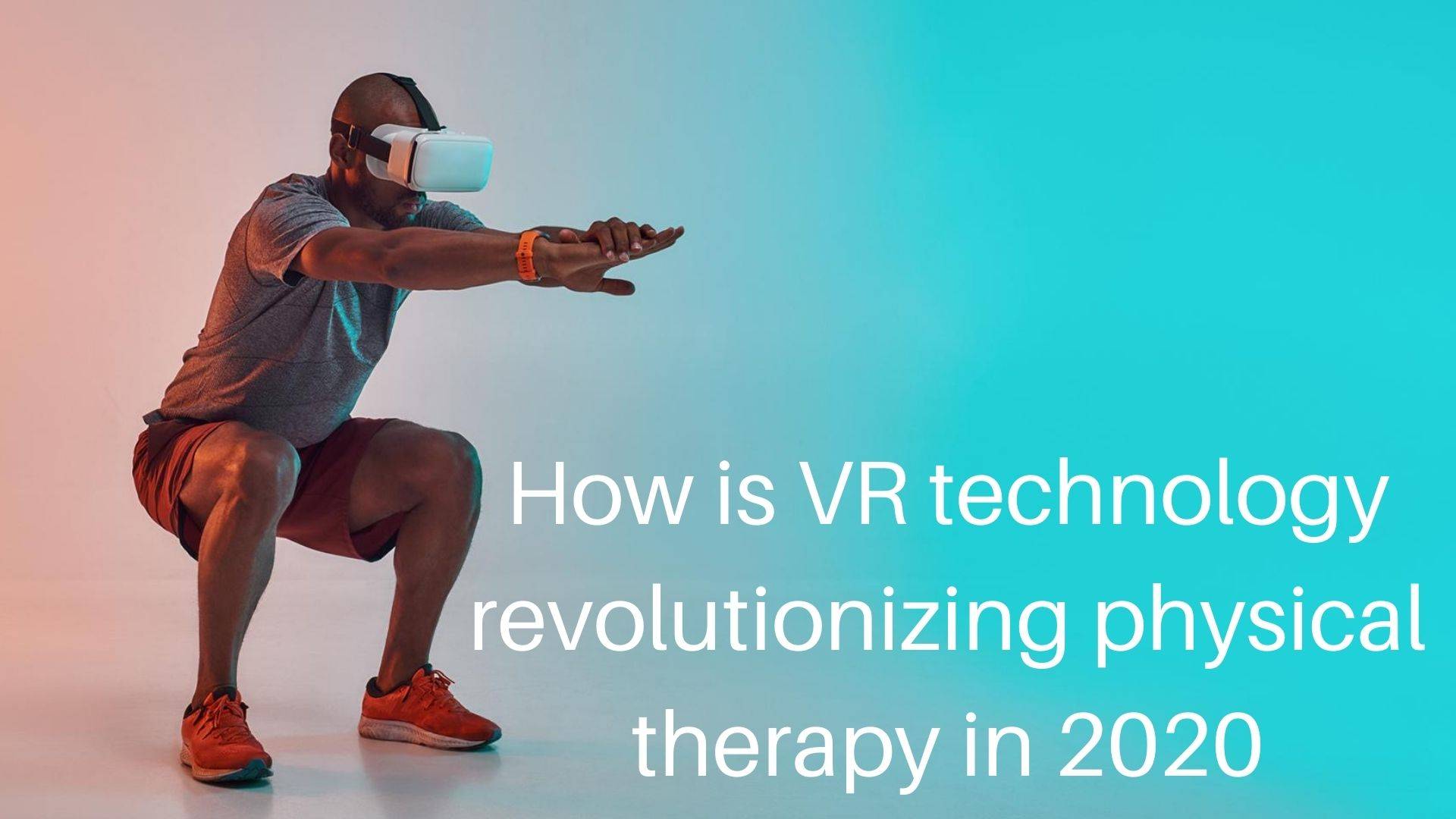
Physical therapy, a treatment that helps people recover, improve, and maintain their injuries whether internal or external with the help of therapeutic exercises. These exercises focus on improving body posture, build strength, reduce pain, enhance coordination, and endure flexibility.
Based on 2019 statistics, more than 800,000 people in the US suffer from brain injury while over 9 million Americans undergo physical therapy treatment every year. These numbers are the mirror to the increasing need for physical therapy services to help several people to regain their control over their body to perform daily activities normally.
But, knowing the facts, physical therapy treatment is a time-consuming process that takes great courage and patience from the person undergoing treatment. This acts as the reason why only 35% of patients follow the instructions to complete the therapy until the end while the rest of them leave it because they find it monotonous.
Tools developed using virtual reality technology can act as a great power booster for such patients and also help create a remote treatment facility using different healthcare tech apps to help these patients get the right treatment even in the time of the COVID-19 crisis.
As reported by Statista, the virtual reality market will reach the revenue number of USD 21.5 billion by the end of 2021 which tells us about the potential use of virtual reality in the healthcare industry.
Coming to the point, below are some of the areas VR technology can help improve physiotherapy treatment.
4 ways VR Technology Help Deliver Better Physical Healthcare
● VR games
This is the most exciting form of VR physiotherapy treatment where patients are made to play games that involve physical exercises using virtual reality. Just as normal gaming platforms, these exercises have various levels.
The patient undergoing treatment has to do a set of exercises considered as a level, on completion of the specified number of exercises the patient is notified as level completed to make them ready for more difficult exercises in the next level.
Such games create a sense of enthusiasm among the patients to try out something difficult to step into the next level, which they would fear to do otherwise with the traditional method.
● VR headsets Used For Appointment Scheduling
With the increasing need for Social distancing, VR headsets, and tele- physiotherapy concepts have seen a surge. Here the therapist and the patients can set a virtual meeting through a mobile app where the doctors can treat the patient through audio or video call.
It’s a virtual physiotherapy service where the doctors help their patients to do certain exercises to treat them remotely. Here the virtual headsets assist the patients to receive their progress reports through the VR app.
All they need to do is put on their headsets and gain access to the patient’s report prepared by the therapists which include the details about the progress with the indications for better understanding. This helps in easy appointment scheduling and removes the need for one-one regular checkup meetings.
● VR + 3D motion capture
3D motions are always eye-capturing and a fascinating thing to make things learn easier. Whether it’s for education or for treatment. Combining the VR technology with 3D motion can elevate the treatment experience to the next level.
Sitting in their homes, the patients can use these advanced tools, where the real movements of a person are captured to create a 3D virtual avatar. The patient then can put on the VR device to feel the avatar and follow the steps that they see virtually.
Here the patient needs to coordinate their steps with the virtual avatar and match their timings. The therapist changes the speed without their patient’s notice to help them match up with the speed of Avtar naturally. The stepping voice is also added to these movements of Avtar to help the patients feel the change and improve the chances of recovery.
● Use of VR tools for internal physiotherapy research
VR tools make the research process easier for physiotherapy. The apps and the software help the therapist to explore various infected areas of the patient like the knee joint, hip joint, areas near the heart, and ears.
VR technology helps them take a tour inside a virtual human body to understand the gaps and fill them with the right treatment. Such research helps them gain a better understanding of bone misplacements and tissue structures. This VR technology experience allows the therapists to rotate their heads to look at different flowing fluids and blood vessels to understand their working and the effects of different exercises in the body.
Thus it’s a great way a therapist can learn and develop various new techniques to cure their patients.
The VR technology and tools are widely expanded to have various benefits to the healthcare industry, below are some advantages curated that work specifically for the physical therapy niche.
Benefits of VR Technology For Physical Therapies
● Improve therapy experience
The patients undergoing physical therapy treatment get bored with the slow progressive process and do the same moves every day. VR technology with its gamification model and 3D motion capture treatments adds fun to these monotone treatments.
These technology tools help the therapist to keep up their patient’s spirit to get themselves cured by adding fun with the treatment. The patients find these treatments interesting and are enthusiastic to explore more.
● Acts as an information source for therapists
The VR therapy apps collect the patient’s information to make it available for the doctors and therapists to research and analyze. These data can help generate an analytical report on how the various treatments and exercises are working for various age groups and the time span that it takes based on the generated recovery curve.
This data helps the therapist to create a personalized treatment based on the effect that is seen on the patients to help them recover faster and reduce the risk associated with performing various exercises.
● Remote treatment
VR tools help the therapists to have a constant watch on their patient’s movement by collecting their progress reports. Here the patient sitting in the comfort of their homes can get the treatment under the expert supervision in real-time where the therapist can encourage their patient to do better irrespective of their location.
Moreover, with the VR headset and the various Tele-physiotherapy apps, the appointment scheduling and regular checkups make the process of treatment way easier to be operated from remote locations.
In Summary
VR technology is spooning the healthcare industry with an abundance of innovation making it easier, funnier, and interesting to have a treatment. The increasing development in the VR tools is helping the researchers to create enhanced medical services to improve the experience of the patients getting the treatment.
Physical therapy is a very crucial aspect of the healthcare industry thus has a great scope of development to bring a revolution in the physiotherapy field by implementing remote healthcare services using VR.
Digital Web Services (DWS) is a leading IT company specializing in Software Development, Web Application Development, Website Designing, and Digital Marketing. Here are providing all kinds of services and solutions for the digital transformation of any business and website.










